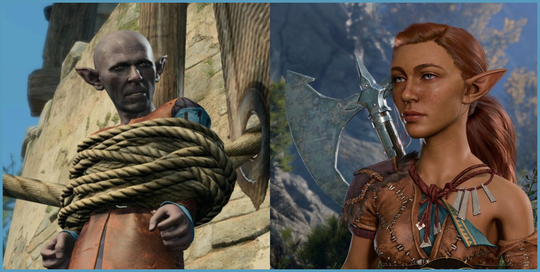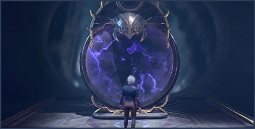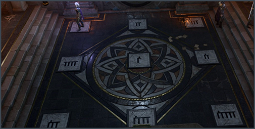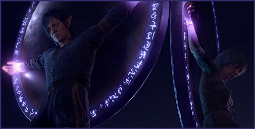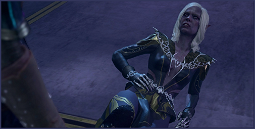Looking for some tips on how to play as a gnome in Baldur’s Gate 3?
Gnomes are one of the wide range of races and subraces you can choose from in the D&D game. While gnomes are common in other fantasy games and the series itself, there are a few things you need to know to access those narrow crevices and hidden areas only they can.
Baldur’s Gate 3 gnomes have unique abilities and traits that set them apart from other small species. They can access areas that other, taller species can’t, but they’re not always welcome. To mitigate their slower movement speed, equip your gnome with the right abilities, class, and magic items. Once you’ve settled on your character build, you can learn more about the different types of gnomes and their unique traits, which will help you create a character that excels in one of the best PC games of this year.
What are the gnome subraces in BG3?
There are four main gnome subraces in Baldur’s Gate 3: deep gnomes, forest gnomes, rock gnomes, and the regular gnomes. Each subrace has unique traits and abilities. Here are the different subraces and what makes them special:
Deep Gnomes
As their name implies, deep gnomes live in the deep places of the world. They have extended darkvision, giving them a significant advantage as a ranged or stealthy character. Deep gnomes also make excellent rogues or non-magical ranged combat characters.
Forest Gnomes
Forest gnomes are the most commonly seen gnomes in Faerûn, but that doesn’t mean they’re the best. Forest gnomes lack the stealthy and magical abilities of the deep gnomes, but they can offer unique dialogue options to characters of other races. If you want a gnome for role-playing purposes, forest gnomes offer a lot of options.
Rock Gnomes
Rock gnomes are sturdy and hardy, making them perfect for the tanky classes, especially barbarians. They can also be good for wizards, as their intelligence bonus lends itself well to the class. When choosing a rock gnome, you should try to maximize your character’s base stats, as they have a few disadvantages.
Regular Gnomes
Regular gnomes are the most basic of the subraces, but they still have a lot to offer. As the most common race in the Sword Coast, you can find regular gnomes anywhere, which makes them excellent for multiclassing or trying out different builds.
How do gnome subraces work in BG3?
Each gnome subrace has its own unique traits, which can make a big difference in combat and exploration.
Deep Gnomes
Deep gnomes have access to a few racial spells and abilities, but their most notable trait is their extended darkvision. This allows them to sneak up on enemies or shoot arrows from a safe distance.
Forest Gnomes
Forest gnomes are the most widely available gnomes in the world of Baldur’s Gate, and they have a few unique benefits. They can communicate with squirrels and other small woodland animals, making them a good choice for a ranger or druid. In addition, they have a unique dialogue option with dwarven NPCs, which can be fun to explore.
Rock Gnomes
Rock gnomes are sturdy but have a few notable nerfs. They have a lower intelligence score, which makes them harder to cast spells with. They also have a slower movement speed, but this can be mitigated with items or abilities.
Gnome Cunning
All gnomes have access to Gnome Cunning, which gives them advantage on certain saving throws. Gnome Cunning can make it difficult to affect gnomes with spell effects or other magical conditions.
Choosing the right gnome subrace
When you’re choosing your gnome subrace, it’s important to keep your build in mind. There are no wrong choices when it comes to gnomes, but you can find optimal builds for specific classes.
Wizards benefit immensely from the gnome’s intelligence bonus, so rock gnomes are an excellent choice for a spellcaster. Barbarians can be hardy and difficult to kill, so those rock gnomes with a strength bonus won’t go to waste. Rogues can also be stealthy and deadly with deep gnomes, who have a unique racial spell that grants increased movement speed when sneaking.
If you’re looking for a melee character with a gnome, a barbarian or fighter is your best option. As gnomes don’t have a strength bonus, a fighter can access more powerful weapons by choosing strength as their ability score gain.
Rogue arcane tricksters are a good choice for a gnome stealth build, as they excel in stealth and ranged attacks. With your gnome’s dexterity bonus, you can be a deadly rogue who can hide in the shadows, strike, and get the hell out of there before anyone knows what hit them.
There are a few gnome kits available in BG3, including the knave, which suits rogues, and the tinker, which is perfect for a gnome who loves tinkering with devices.
And those are our tips for how to play as a gnome in Baldur’s Gate 3. If you’re planning to play as a gnome, hopefully, our guide gives you the tools you need to access those areas other characters can’t reach. So, if you’re ready to explore the vast world of the Forgotten Realms, follow our essential Baldur’s Gate 3 guide to ensure you have all the information you need to make an excellent character.
